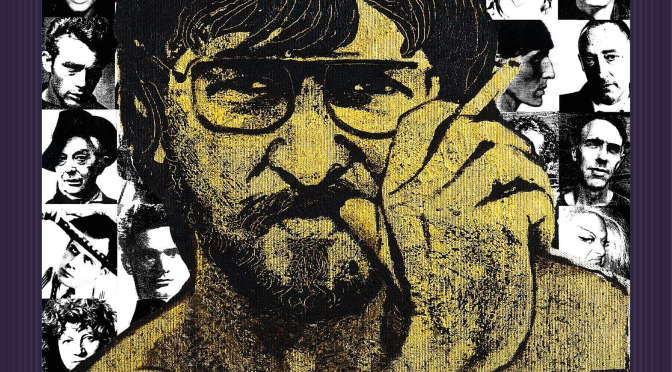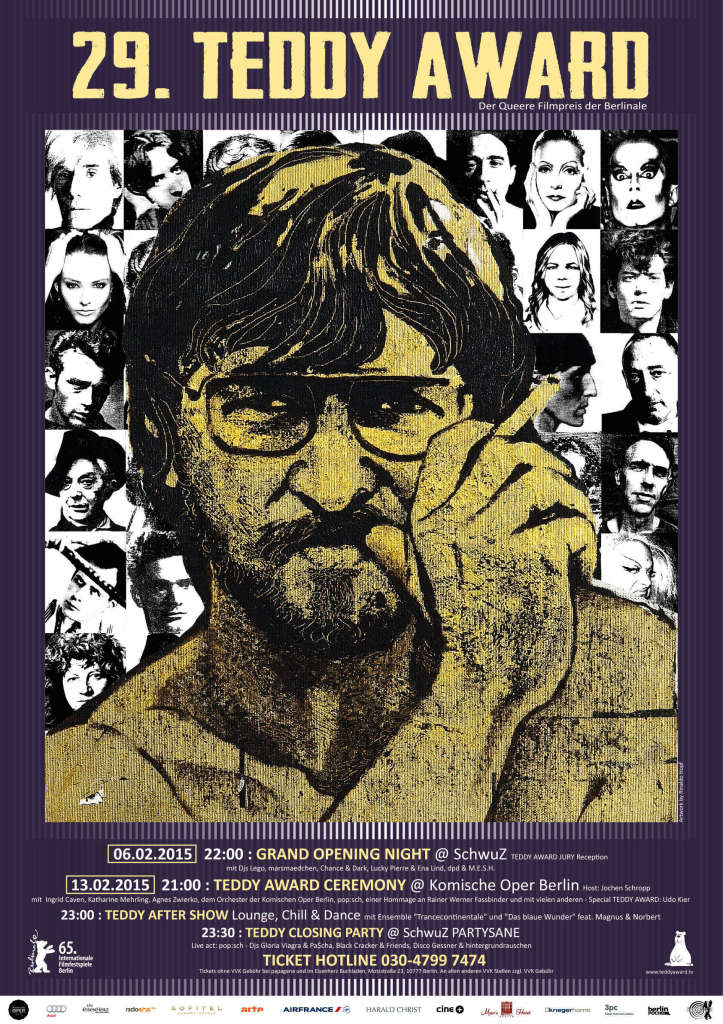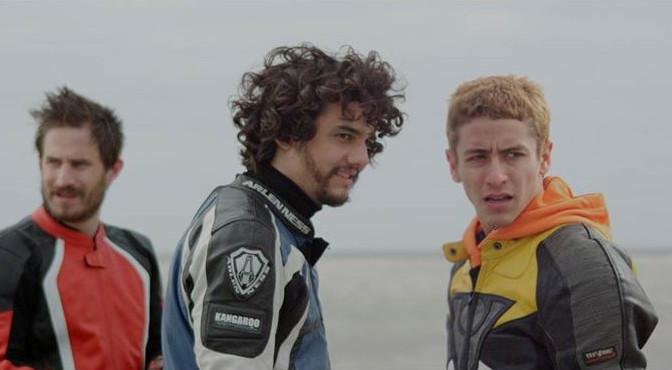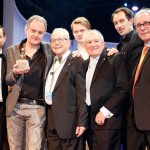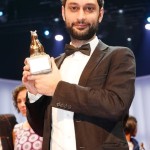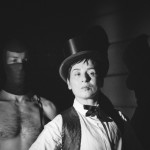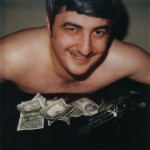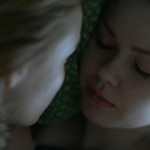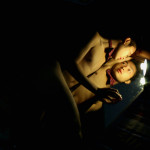The winners of this year’s TEDDY AWARDS were elected yesterday and it was an intoxication of passion. It was a feast. I saw the city in turmoil, the heat in the eyes and the golden buffets. It was as if the carnival was parading through the streets of Hamburg and as if the devil would doubt his own existence. I saw the night in full splendour shining in all colours. – I just wish there was no morning after…
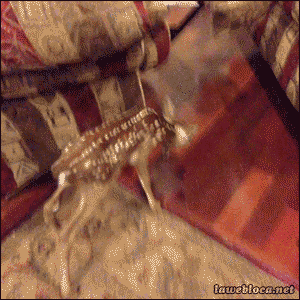
And if you once again should have missed the biggest party in history, you can read all about the winners of yesterday evening, the show and the artists here, get all the clips and background information of the movies.
Also, if you have the chance, you should try to watch some more movies today!
UNFRIEND
(Unfriend)
 David lives with his grandmother. She supports her grandchild’s gay life, but he prefers to withdraw into his Facebook world. David would do anything for Jonathan and shares his feelings with online friends. When Jonathan posts images of his new lover, David struggles to overcome his
David lives with his grandmother. She supports her grandchild’s gay life, but he prefers to withdraw into his Facebook world. David would do anything for Jonathan and shares his feelings with online friends. When Jonathan posts images of his new lover, David struggles to overcome his  powerlessness with a feverish obsession to win back his friend. He finds himself in the grip of both real and virtual aspects of his unstable personality.
powerlessness with a feverish obsession to win back his friend. He finds himself in the grip of both real and virtual aspects of his unstable personality.
Altarejos melds real and virtual worlds into a sensual atmospheric arena that confronts us with his protagonist’s deep wounds.
Cinestar 7, 12.00am
EL CARRO AZUL
(The Blue Car)
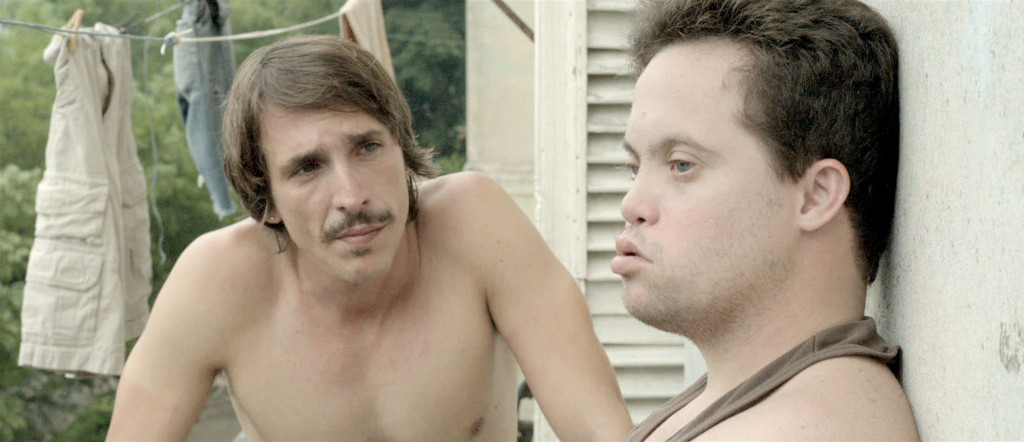
After his grandmother’s death Hansel returns to Cuba from San Francisco to look after his brother, Marcos, who has trisomy 21. The brothers have drifted apart. Marcos misses his grandmother and refuses to accept that she has died. She was the only one he trusted, the only one to look after him so patiently, and to teach him so much about the world. At first Marcos sees Hansel as an intruder in his world. He spends most of his time on the balcony looking up and down the street and playing a game he always used to play with his grandmother: waiting for an orange car. Hansel tries to approach his brother, albeit somewhat awkwardly. He begins to play the game with him, in his own way – hoping to regain his brother’s trust.


Colosseum 1, 1.00pm
52 TUESDAY
(52 Tuesdays)
Billie can’t believe her mother has decided to undergo gender reassignment surgery. James – as her mother now prefers to be known – has always wanted to be a man. Nonetheless, James tries to observe his motherly responsibilities, while he goes through this change. There’s plenty going on in Billie’s own life, too. Enthralled by a clandestine amorous encounter between two pupils, she joins in. When James tries to protect Billie, their already fragile relationship threatens to collapse.
Sophie Hyde, known for her documentary films, makes use of a documentary style in her first drama. Filming took place chronologically over a period of one year with the story being developed alongside.


Cubix 8, 3.30pm
FELICE QUI È DIVERSO
(Happy to be Different)
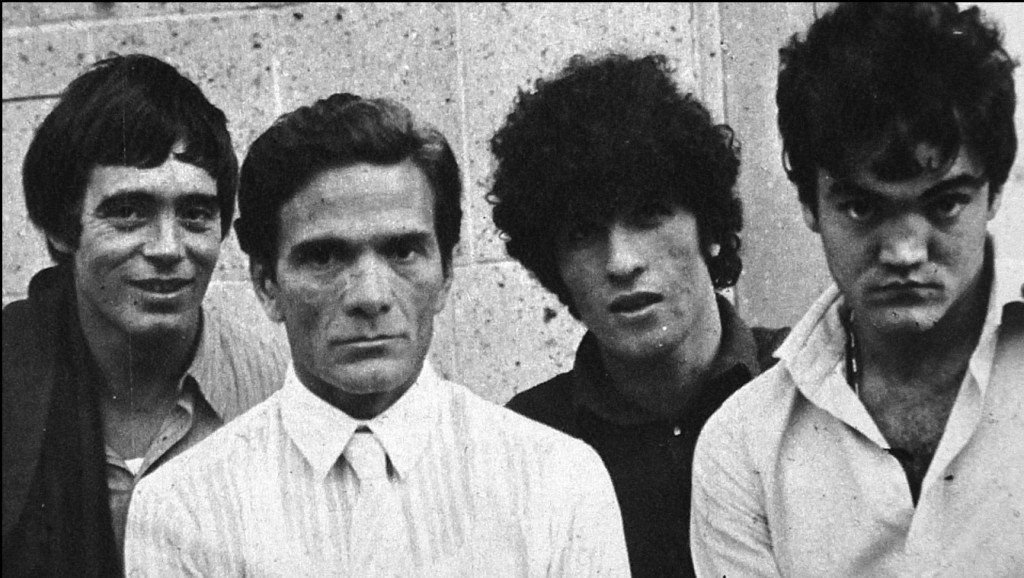
An older gay couple in a city in northern Italy talk about their decades-long relationship. A man describes how he was physically abused by his father because of his sexual identity. Gay men from across the social classes and regions of the country have their say and discuss the different conditions which determined gay life in Italy. There is a discomfiting and controversial discrepancy between the reality of the individual accounts and the media coverage. The latter often portrays gay people with a discriminatory irony or is manipulating, especially where intellectuals are concerned. With FELICE CHI È DIVERSO, Gianni Amelio relates a gay history of Italy since fascist times. His analysis of social conditions is both moving and enraging and refuses to allow the audience to remain indifferent.
International, 5.00pm
TEDDY Winner 2013
HOJE EU QUERO VOLTAR SOZINHO
(The Way He Looks)
 Giovana is Leo’s best friend. They spend their afternoons at the pool, awarding points for the level of their boredom and just hanging out. Leo is rather self-contained; even his schoolmates’ barbs can’t dent his sense of his own independence. This blind fifteen-year old
Giovana is Leo’s best friend. They spend their afternoons at the pool, awarding points for the level of their boredom and just hanging out. Leo is rather self-contained; even his schoolmates’ barbs can’t dent his sense of his own independence. This blind fifteen-year old  wants to take control of his own life. The arrival of a new pupil, Leo, at school prompts Leo to reassess his daily routine. As naturally as Leo becomes aware of his feelings for Gabriel, the more he allows himself to feel unsettled by his friend’s tentative advances. The winner of the
wants to take control of his own life. The arrival of a new pupil, Leo, at school prompts Leo to reassess his daily routine. As naturally as Leo becomes aware of his feelings for Gabriel, the more he allows himself to feel unsettled by his friend’s tentative advances. The winner of the  2008 Crystal Bear has the protagonists of his first feature-length drama orbit each other in an emotional universe of fierce attractions.
2008 Crystal Bear has the protagonists of his first feature-length drama orbit each other in an emotional universe of fierce attractions.
Cinestar 7, 5.00pm
IBHOKHWE
(The Goat)
Ukwaluka is an ancient circumcision ritual  for young men still widely practiced by the Xhosa in South Africa. It marks the transition from youth to manhood. A boy who has just undergone circumcision sits in semi-darkness in a simple hut on a hill, far away from the village, as prescribed by the initiation ritual. He is covered from head
for young men still widely practiced by the Xhosa in South Africa. It marks the transition from youth to manhood. A boy who has just undergone circumcision sits in semi-darkness in a simple hut on a hill, far away from the village, as prescribed by the initiation ritual. He is covered from head  to toe with a paint made from clay which makes him look as white as a goat. This should be a period of healing, but he is cold and in pain. His grandfather, who is supposed to induct him into his new life, has not yet appeared. According to the belief system of the Xhosa, Ukwaluka also purges the boy from homosexual desires, for which there is no place in the world of adults.
to toe with a paint made from clay which makes him look as white as a goat. This should be a period of healing, but he is cold and in pain. His grandfather, who is supposed to induct him into his new life, has not yet appeared. According to the belief system of the Xhosa, Ukwaluka also purges the boy from homosexual desires, for which there is no place in the world of adults.
Cinemaxx 1, 5.30pm
TITS
(Tits)

Sam, 13, hopes to conceal his breasts with a tightly worn leather belt. This slender teenager is going through a particularly tough time at his authoritarian boys’ school on account of a hormonal disorder. Desperate, he tries everything he can to avoid swimming lessons, but his worst fears are confirmed when he discovers a pink bra hanging from his peg. Nonetheless, Sam manages to find the courage to face up to one of the ringleaders and refuses to be blackmailed. The film displays a great deal of empathy for its protagonist’s fears and anxieties but also exudes charm and subtle humour.

Cinemaxx 1, 5.30pm
THROUGH A LENS DARKLY
(Through a Lens Darkly)
 In his documentary, Thomas Allen Harris chronicles the history of photography from an Afro-American perspective. With the aid of archive photographs he makes apparent how the black community used the camera as a tool for social change. Making use of photographic arrangements,
In his documentary, Thomas Allen Harris chronicles the history of photography from an Afro-American perspective. With the aid of archive photographs he makes apparent how the black community used the camera as a tool for social change. Making use of photographic arrangements,  some of which are collage-like and others animated, the film introduces us to photographers of arthistorical importance.
some of which are collage-like and others animated, the film introduces us to photographers of arthistorical importance.
Harris makes use of personal material depicting his own family in order to reflect upon the emergence of a sense of photographic identity among African Americans.
Cubix 7, 5.30pm
EL CARRO AZUL
(The Blue Car)

After his grandmother’s death Hansel returns to Cuba from San Francisco to look after his brother, Marcos, who has trisomy 21. The brothers have drifted apart. Marcos misses his grandmother and refuses to accept that she has died. She was the only one he trusted, the only one to look after him so patiently, and to teach him so much about the world. At first Marcos sees Hansel as an intruder in his world. He spends most of his time on the balcony looking up and down the street and playing a game he always used to play with his grandmother: waiting for an orange car. Hansel tries to approach his brother, albeit somewhat awkwardly. He begins to play the game with him, in his own way – hoping to regain his brother’s trust.


Colosseum 1, 1.00pm, Cinemaxx 1, 8.30pm
TEST
(Test)
It’s 1985. The location is San Francisco,  America’s ‘gay mecca’. Introverted Frankie is an understudy in a prestigious modern dance company. Todd, an established dancer in the troupe, is openly homosexual. When one of the dancers falls ill one day, Frankie is asked to stand in and Todd helps him prepare. Could the illness be the
America’s ‘gay mecca’. Introverted Frankie is an understudy in a prestigious modern dance company. Todd, an established dancer in the troupe, is openly homosexual. When one of the dancers falls ill one day, Frankie is asked to stand in and Todd helps him prepare. Could the illness be the ‘gay plague’ as they are already vilifying AIDS? Ignorance, repression, panic, fear, prejudice and open homophobia are rife. The friendship between these two very different men deepens in these new circumstances.
‘gay plague’ as they are already vilifying AIDS? Ignorance, repression, panic, fear, prejudice and open homophobia are rife. The friendship between these two very different men deepens in these new circumstances.
Chris Mason Johnson’s richly atmospheric film is reminiscent of the first great films of the time depicting the challenges faced by the community.
Cubix 7, 10.30pm, Cubix 8, 10.30pm
PAPILIO BUDDHA
(Papilio Buddha)
Shankaran discovers a rare butterfly, the  Papilio Buddha, which is only found in the Western Ghats in India. It is a near perfect moment for him and his gay friend, Jack. The American accompanies Shankaran home where he witnesses an argument between Shankaran and his father which he fails to understand. His father is the
Papilio Buddha, which is only found in the Western Ghats in India. It is a near perfect moment for him and his gay friend, Jack. The American accompanies Shankaran home where he witnesses an argument between Shankaran and his father which he fails to understand. His father is the  leader of a group of Dalits, or low caste ‘untouchables’ who are engaged in a brutal struggle for land rights in many places in India. Although their rights have been enshrined in the constitution since independence, the police regard Dalits as terrorists. Shankaran is put behind bars and Jack is soon expelled from the country on account of his association with him.
leader of a group of Dalits, or low caste ‘untouchables’ who are engaged in a brutal struggle for land rights in many places in India. Although their rights have been enshrined in the constitution since independence, the police regard Dalits as terrorists. Shankaran is put behind bars and Jack is soon expelled from the country on account of his association with him.
Cinestar 3, 10.45pm
